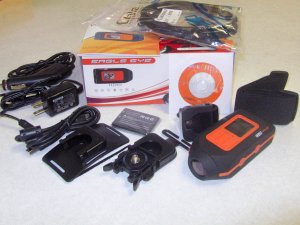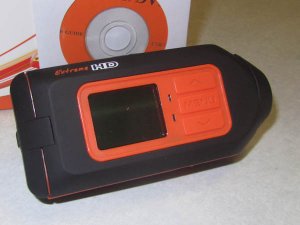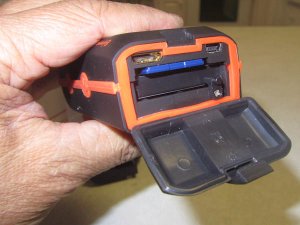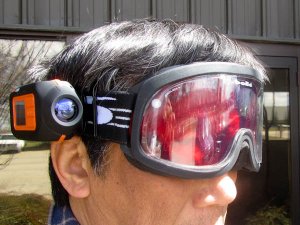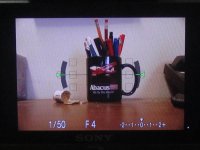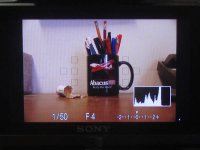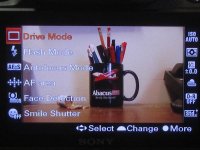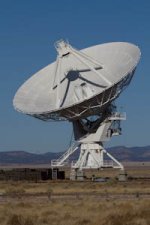Online Magazine
Recent Posts
- Safeguard your Cellphone Photos
- Black & White to Color – Instantly
- Wearing Many Hats
- Video Roundup
- Rescuing Your Blurry Pictures
- Showing Their Age
- What is Your Angle?
- Panorama Photos
- Humorous Photos
- Close Ups
- Fisheye Pictures
- Photo Antiquities
- Printing Big
- Appreciating Scale
- Celebrity Sightings
Tags
More Places to Go
- Free "How-To" Books “How To” books for popular cameras 0
- Vist Us on Facebook keep in touch with us on Facebook 2
Archives
- July 2023 (1)
- March 2023 (2)
- February 2023 (1)
- December 2022 (1)
- October 2022 (1)
- September 2022 (8)
- August 2022 (9)
- July 2022 (1)
- June 2022 (1)
- June 2021 (1)
- May 2021 (1)
- March 2021 (5)
- February 2021 (4)
- January 2021 (2)
- April 2019 (1)
- March 2019 (1)
- February 2019 (1)
- October 2018 (2)
- April 2018 (1)
- March 2018 (4)
- February 2018 (1)
- November 2017 (1)
- August 2017 (1)
- June 2017 (1)
- April 2017 (1)
- March 2017 (5)
- February 2017 (2)
- January 2017 (1)
- October 2016 (1)
- September 2016 (1)
- August 2016 (1)
- July 2016 (1)
- May 2016 (1)
- April 2016 (1)
- March 2016 (2)
- February 2016 (1)
- January 2016 (2)
- December 2015 (1)
- November 2015 (1)
- October 2015 (3)
- April 2015 (1)
- March 2015 (5)
- February 2015 (1)
- January 2015 (4)
- December 2014 (2)
- November 2014 (5)
- October 2014 (2)
- September 2014 (1)
- August 2014 (2)
- July 2014 (1)
- May 2014 (1)
- April 2014 (5)
- March 2014 (5)
- December 2013 (2)
- November 2013 (18)
- October 2013 (1)
- September 2013 (1)
- August 2013 (1)
- July 2013 (1)
- June 2013 (3)
- May 2013 (1)
- April 2013 (2)
- March 2013 (1)
- February 2013 (1)
- January 2013 (1)
- December 2012 (1)
- November 2012 (2)
- October 2012 (2)
- September 2012 (5)
- August 2012 (2)
- July 2012 (1)
- June 2012 (1)
- May 2012 (1)
- April 2012 (4)
- March 2012 (1)
- February 2012 (1)
- January 2012 (3)
- December 2011 (1)
- November 2011 (3)
- October 2011 (1)
- September 2011 (2)
- August 2011 (2)
- June 2011 (3)
- May 2011 (4)
- April 2011 (8)
- March 2011 (8)
- February 2011 (10)
- January 2011 (6)
- December 2010 (11)
- November 2010 (14)
- October 2010 (6)
- September 2010 (12)
- August 2010 (2)
- July 2010 (4)
- June 2010 (3)
- May 2010 (1)
- April 2010 (1)
- March 2010 (2)
- February 2010 (1)
- January 2010 (1)
- December 2009 (1)
- November 2009 (2)
- October 2009 (2)
- September 2009 (1)
- August 2009 (3)
- July 2009 (2)
- June 2009 (1)
- May 2009 (2)
- April 2009 (1)
- March 2009 (2)
- February 2009 (1)
- January 2009 (3)
Extreme Sports Camera
06th April 2011
Review of the Eagle Eye
From the title, you might think that I participate in extreme sports. Hah, this is far-from-the-truth. Instead, the title is to let you know that there’s a camera that is rugged enough to be used by enthusiasts that do in fact participate in extreme sports.
Let’s move on. In a few days, I’ll be off to the Sierra Nevadas for some easy and leisurely Spring skiing.
In the past, I’ve always lugged a camera around to capture the action. This year, I’ve decided that I would try a different tact.
My experience with Eagle Eye HD so far is based on an hour or so of becoming familiar with its use.
I’ll complete the review of this camera after I return from my ski trip. I hope to have the results in ten days or so. As already mentioned, since I’m not an extreme sportsman, I may have my two expert-skiing sons help with the review.
Coincidentally, I purchased the Eagle Eye from Stuntcams.com. They are located in Grand Rapids only a few miles from our offices where Mike gave me the run-down on this camera. It sells for $249. Stuntcams.com also sells many other sports cameras.
Please note that Stay Focused has no connection to Stuntcams.com.
Written by Arnie Lee
Sony Alpha A55 – Review Part 2
14th March 2011
Unique Features of the Sony Alpha A55
The Sony Alpha A55 has a long list of features – some of which you may find in a few other cameras and others that are unique only to the A55. But taken together they they make the A55 a very compelling piece of equipment.
In Part 1, I talked about the “standard” features of the A55.
In this part of the review, I’ll key in on several of these features that are both unique and innovative.
The first three features are possible because of the A55’s translucent mirror.
Electronic Viewfinder
X-Country Photo Trip – Part 2
16th November 2010
On my latest cross country drive to deliver my Mom’s car to Phoenix, I broke the 2000 mile journey into two parts. Here’s why.
For years I’ve been reading and hearing about Bosque del Apache National Wildlife Refuge. It’s known as one of the best places in the USA to watch birds, especially those who have migrated there from the northern latitudes for the winter. Since the route from Grand Rapids to Phoenix passes close by, I decided to detour slightly.
Part one of the journey was 2-1/2 days traveling from Grand Rapids to Socorro, NM and visiting Bosque. Although I was in the NWR for only 16 hours or so, I totally enjoyed the wildlife and outdoor. You can see some of the photos from short stay at Bosque here.
Part two of the journey was the remaining 380 mile ride between Socorro and Phoenix. As I was planning for the drive a few days before the trip, I noticed a place on the map with a funny name “VLA”. When I googled it, I found it to be an acronym for Very Large Array. It’s a set of huge radio telescopes 50 miles west of Socorro on US Route 60, the preferred highway to Phoenix. It sounded interesting, so I decided that this would be another stop after Bosque del Apache.
On Friday morning I was on the road by seven and heading west on US 60. An hour later, I saw an amazing group of what appeared to be white dishes sitting on the high desert.
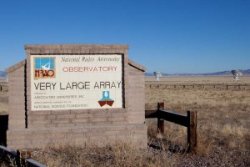 The VLA is operated by the National Radio Astronomy Observatory |
 The array consists of 27 antennas mounted on tracks to enable repositioning. |
You may recognize these antennas if you’ve seen the 1997 movie “Contact” starring Jodie Foster about the search for extra-terrestrial intelligence. I don’t know if the NRAO found any, but they were definitely pointing the dishes away from Washington, DC. I’m not sure what that means. 🙂
After spending two hours at the VLA, it’s time to go. The road takes me over some easy mountain grades. Shortly after reaching the New Mexico-Arizona state line I spot several large black birds making circles overhead. I stop the car, retrieve my camera and begin shooting when I notice a dozen much larger birds flying much higher.
Seeing their white heads, there’s no mistaking that these are bald eagles! Although they are above a field a few hundred yards away, I have such a wonderful feeling watching these majestic creatures soar the skies.
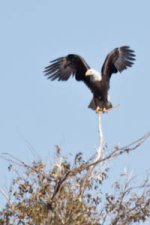 |
 |
Heading west again it’s more high plains and scrub. At Show Low, US 60 turns south and descends into the Salt River Canyon, another gorgeous part of Arizona.
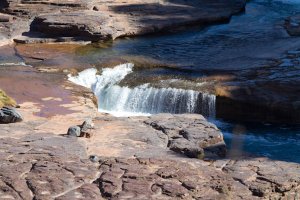 small drop off along the Salt River |
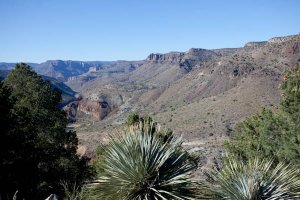 scenic view at the top of the canyon |
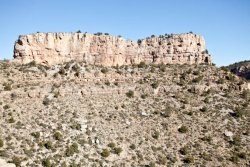 one of many mesas typical of the area |
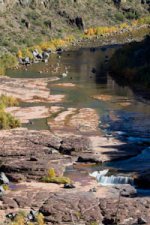 colorful surroundings in the canyon |
To make the travel more interesting, I’ve been able to break up this long cross-country drive into a series of short “photo trips”. I hope that you enjoyed some of these sights as much as I enjoyed visiting them.
I’ll be writing about a few of my next photo trips soon. I’m off the the southwest again in two days.
« Older Posts — Newer Posts »